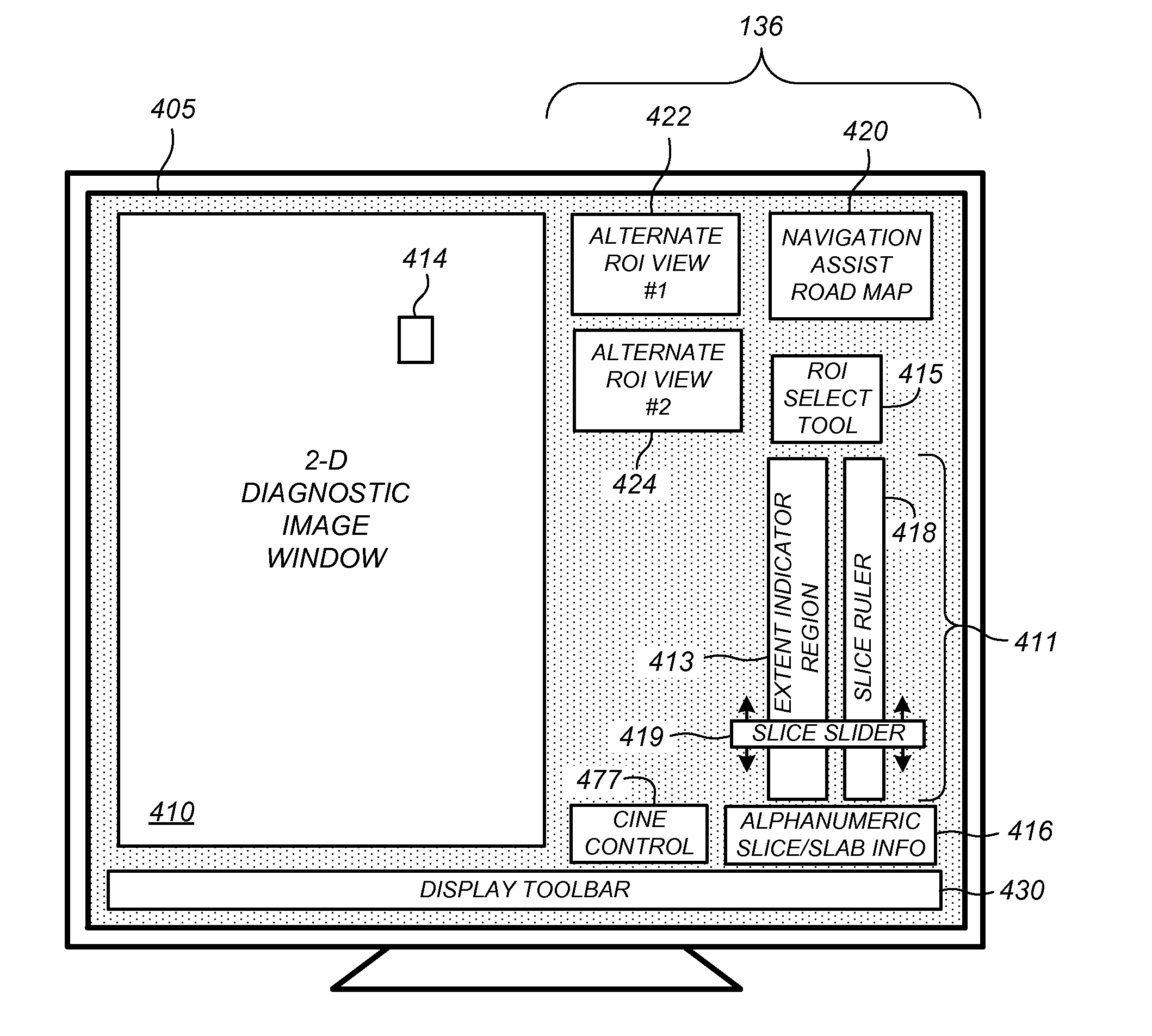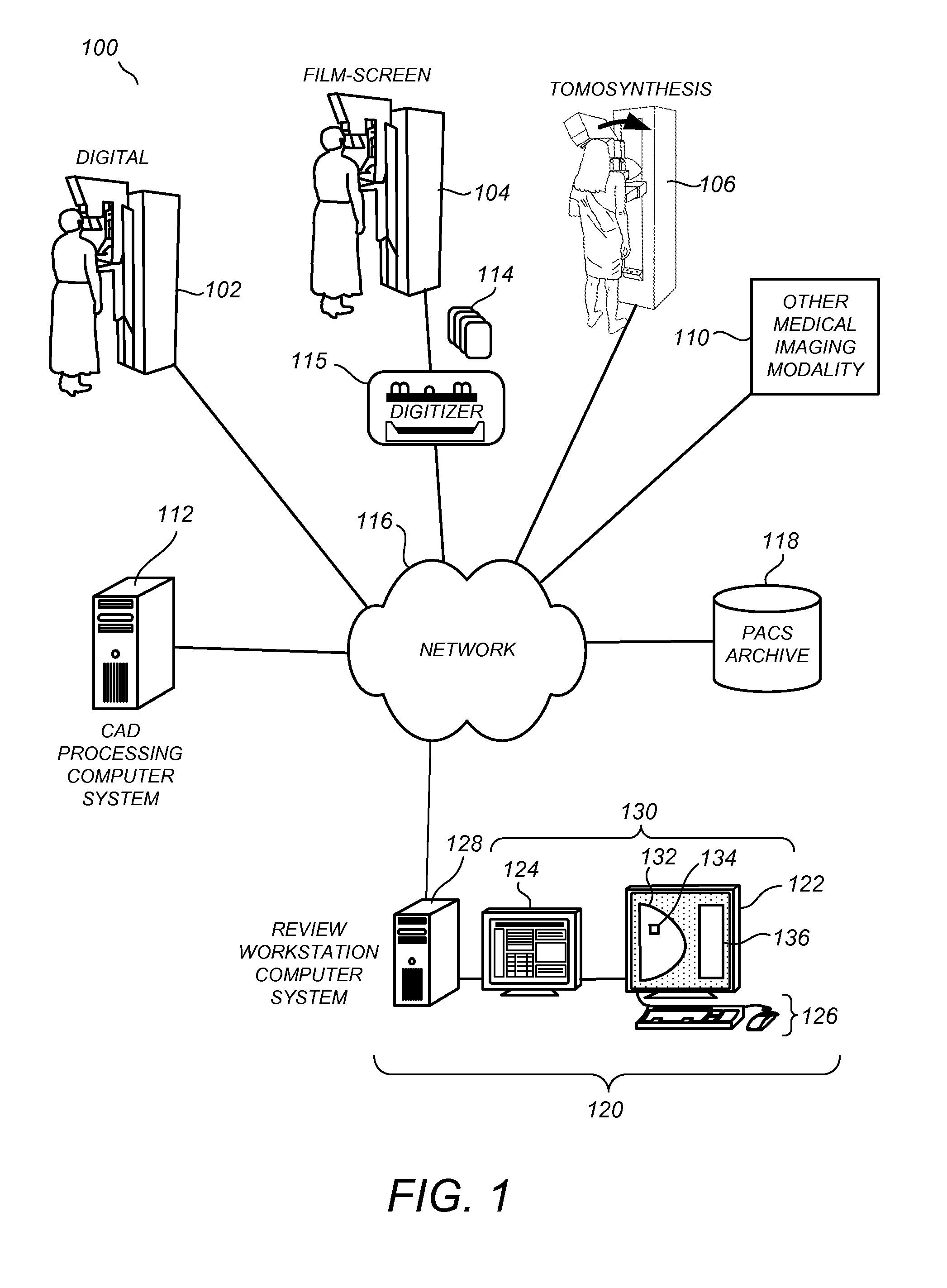Displaying Computer-Aided Detection Information With Associated Breast Tomosynthesis Image Information
a technology of image information and breast tomosynthesis, applied in the field of display of cad results, can solve the problems of inability to provide “true” x-ray tomosynthesis imaging, high anisotropic, and often artifact-laden images, and achieve the effect of increasing the certainty of finding
- Summary
- Abstract
- Description
- Claims
- Application Information
AI Technical Summary
Benefits of technology
Problems solved by technology
Method used
Image
Examples
Embodiment Construction
[0034]In describing preferred embodiments illustrated in the drawings, specific terminology is employed for the sake of clarity. However, the disclosure of this patent specification is not intended to be limited to the specific terminology so selected and it is to be understood that each specific element includes all technical equivalents that operate in a similar manner.
[0035]Although the following description refers to user interfaces of one or more preferred embodiments to facilitate dynamic review of breast x-ray tomosynthesis data (either during a first or second reading of the image data) it will readily be appreciated by one of skill in the art that one or more concepts of the preferred embodiments may be extended for use in viewing CAD information available in any dimension of a three-dimensional data set provided by any means, and ‘displayed’ in any manner. Thus the below description should be viewed only as illustrative and not limiting. Although certain terms and definiti...
PUM
 Login to View More
Login to View More Abstract
Description
Claims
Application Information
 Login to View More
Login to View More - R&D
- Intellectual Property
- Life Sciences
- Materials
- Tech Scout
- Unparalleled Data Quality
- Higher Quality Content
- 60% Fewer Hallucinations
Browse by: Latest US Patents, China's latest patents, Technical Efficacy Thesaurus, Application Domain, Technology Topic, Popular Technical Reports.
© 2025 PatSnap. All rights reserved.Legal|Privacy policy|Modern Slavery Act Transparency Statement|Sitemap|About US| Contact US: help@patsnap.com



